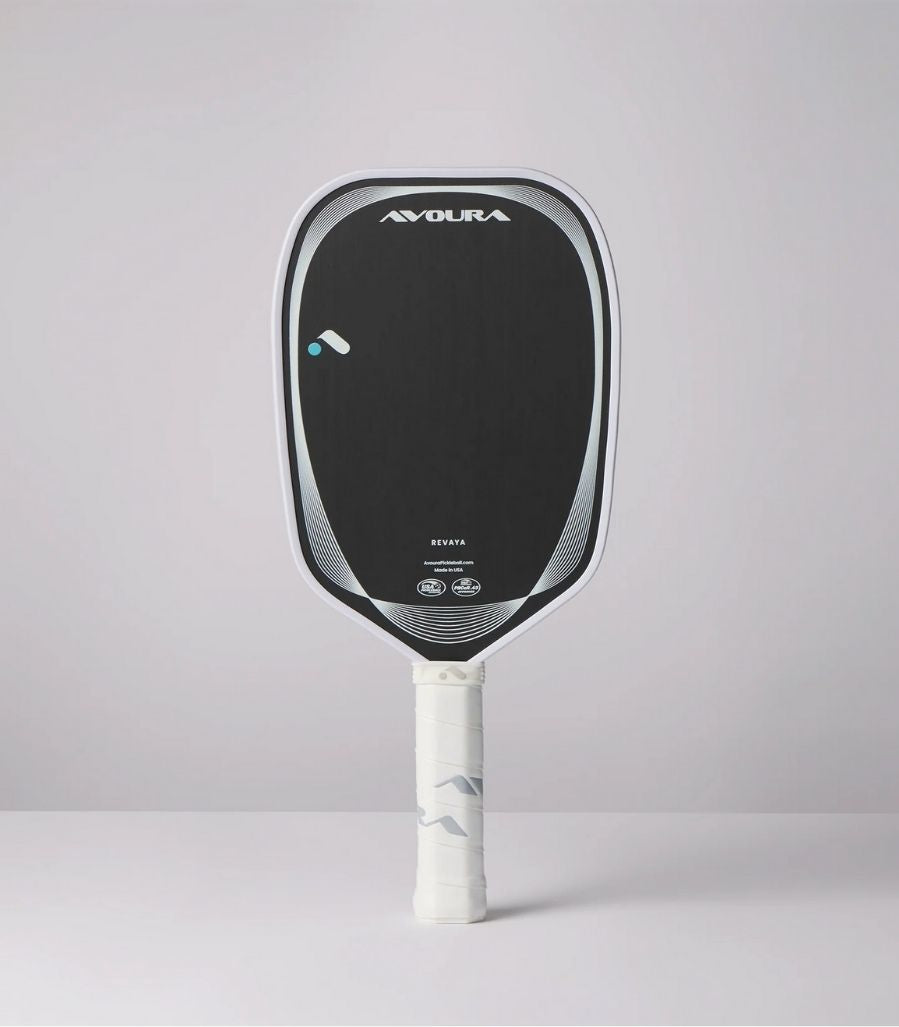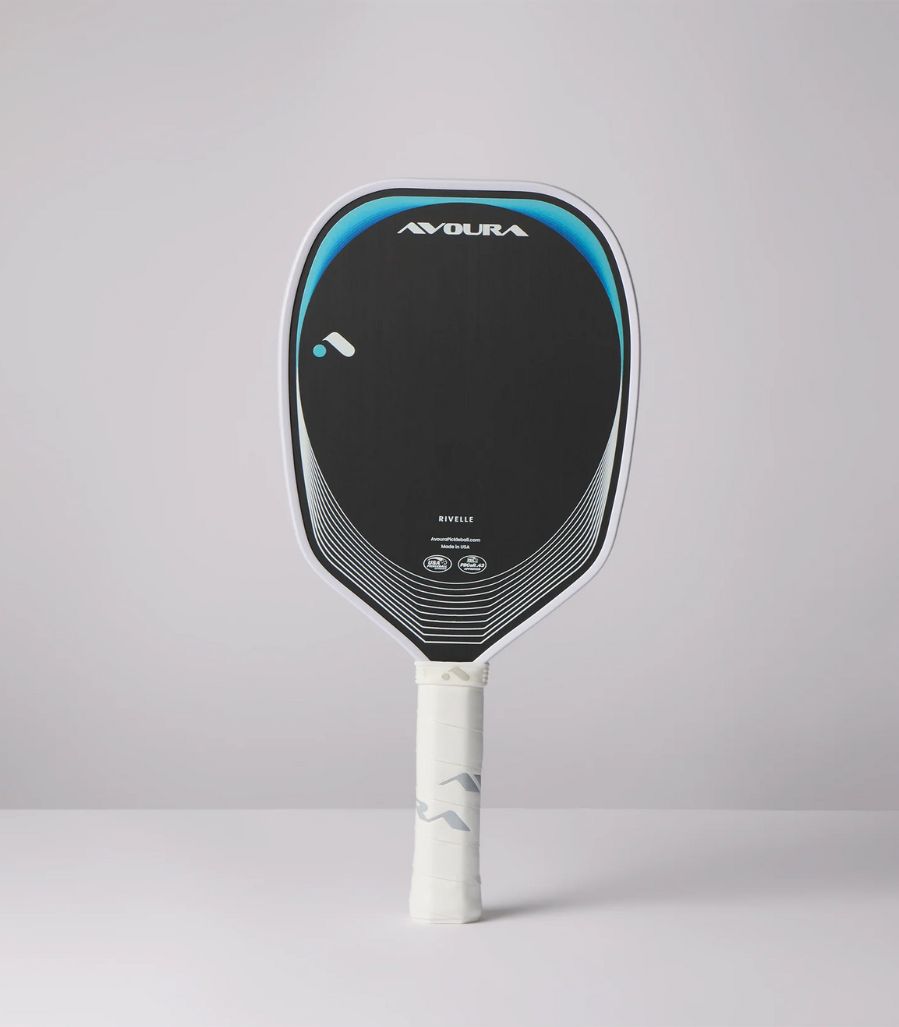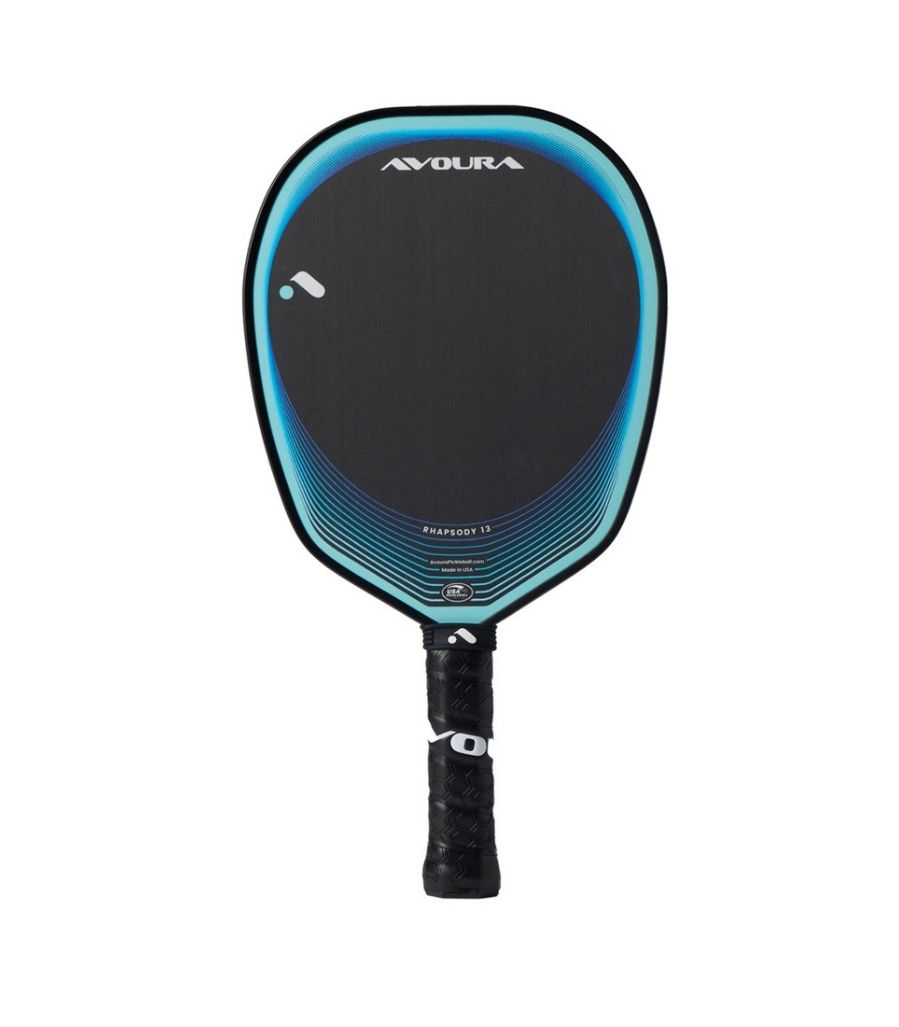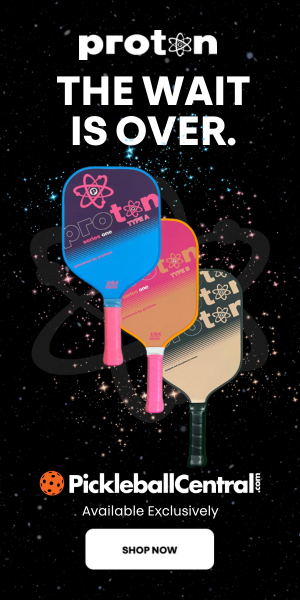Expert review: New Avoura pickleball paddles offer great spin and maneuverability
Last Edited
Jul 08 2025
Category
Gear
Avoura is still a relatively new brand in the pickleball paddle scene, but already they are making waves with their unique shapes and construction methods.
The first Avoura paddle -- the Rhapsody 13 -- was released earlier this spring and was notable for its rounded widebody profile. The Rhapsody 13 is generally considered a control-oriented paddle with great forgiveness.
This month the brand is releasing two more paddles designed with different types of players in mind.
Avoura Rivelle (Hybrid): Hybrid shape optimized for balanced power, touch and speed.
Avoura Revaya (Elongated): Extended reach while maintaining a forgiving strike zone.
Use code KITCHEN for $10 off on the Avoura website.
We'll dive more into how each paddle performs below, but all three models feature technology unique to Avoura.
Sweet spot optimization: Avoura has engineered the widest part of each paddle to align with the equator of the sweet spot. This geometry, combined with their internal weighting system, is meant to create a more forgiving, stable paddle.
Internal weighting system: Avoura melts iron into silicon to create a metallic weighted gel, which is injected around the perimeter of the core. This increases paddle stability, enhances the sweet spot and absorbs shock — resulting in a paddle that feels very consistent.
One of the biggest things that stood out to me with all three of the Avoura paddles was how easy it was to generate spin. This was especially true with the Rivelle model, which was a very fun paddle to play with because I could be very precise and deceptive with my shots.
All of these paddles are also made in the United States, which Avoura says allows them to experiment with new designs faster and ensure consistent quality from paddle to paddle.
Avoura’s design process is driven by Pickleball Hall-of-Famer Jennifer Dawson, Steve Dawson and pro player Callan Dawson.
I've had these paddles for a couple weeks and have put them through my usual testing from the baseline, in the transition zone and at the kitchen line, as well as 5.0+ game play.
Below are my thoughts on how they vary in performance and what type of player would be well-suited to each model.
Avoura Revaya

Best suited for players who: Want to hit big and seek offense first. As Avoura's elongated paddle, this model provides the best reach and the most power, making it easy to be aggressive out of the air at the kitchen line. The sweet spot is positioned toward the top 1/4 of the paddle face, which is where players coming from a tennis background tend to make contact.
SPECS
Weight: 8 ounces
Swingweight: 112
Handle length: 5.5 inches
Paddle length: 16.5 inches
Paddle width: 7.5 inches
Paddle face: T700 raw carbon fiber
Core material: Polypropylene with metallic weighted gel perimeter
Core thickness: 13mm
Pros
- Elongated shape provides good reach at the kitchen line.
- Good power on serves, third-shot drives and overheads -- the most power in the Avoura line by a fairly significant margin.
- More forgiveness and a bigger sweet spot than most widebody paddles due to the unique design that aligns the widest part of the paddle with the equator of the sweet spot.
Cons
- Slightly higher swingweight than the other Avoura models, making it a little slower in the hand in fast exchanges.
Avoura Rivelle

Best suited for players who: Like to use spin to manipulate the ball and prioritize shot placement over power. This was my favorite paddle of the three models because it was very easy to get my third-shot drops to dip hard over the net and also be aggressive with topspin dinks. The combination of good dwell time and great maneuverability also meant that I could be very deceptive on flicks out of the air at the kitchen line. This was a super fun paddle to play with for those reasons. If you're a player who likes to use heavy wrist action with your attacks and rolls out of the air, this is a great option.
SPECS
Weight: 8 ounces
Swingweight: 109
Handle length: 5.5 inches
Paddle length: 16.25 inches
Paddle width: 7.75 inches
Paddle face: T700 raw carbon fiber
Core material: Polypropylene with metallic weighted gel perimeter
Core thickness: 13mm
Pros
- Very easy to generate elite spin.
- Very maneuverable, which is good for hands battles and flicks out of the air.
Cons
- Slightly smaller sweet spot than the Rhapsody 13, but adding weighted tape to the sides of the paddle can help in that regard.
- Slightly less firepower than the Revaya model.
Avoura Rhapsody 13

Best suited for players who: Want to play a control-styled game and reduce unforced errors. Not surprisingly, this paddle performed the best of the three models on resets in the transition zone. The widebody shape makes it a very forgiving paddle, while also producing good pop and elite maneuverability in hands battles at the kitchen line.
SPECS
Weight: 8.1 ounces
Swingweight: 110
Handle length: 5.25 inches
Paddle length: 15.5inches
Paddle width: 8.5 inches
Paddle face: T700 raw carbon fiber
Core material: Polypropylene with metallic weighted gel perimeter
Core thickness: 13mm
Pros
- Great stability and a large sweet spot, making this a good option for control players.
- Like the Rivelle, it's very easy to apply spin.
- Good pop and top-tier maneuverability -- you really notice the difference in fast exchanges at the kitchen line.
Cons
- Slightly less power on full shots (drives and putaways) than the Revaya and Rivelle models.
- Not as much dwell time as the Rivelle -- my theory here is that the slightly longer shape of the Rivelle allows the paddle to flex a little more, which holds the ball on the paddle longer.



